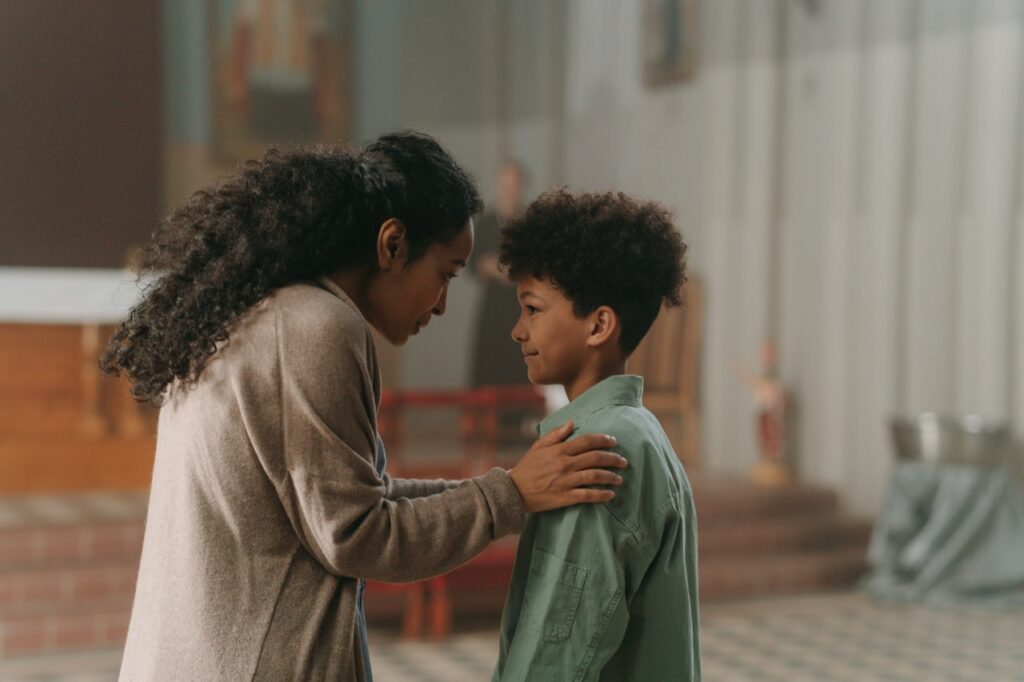
5 Ways As A Parent You Can Help Your Child’s Anxiety
As adults, we look at kids laughing and playing outside with friends or riding their bike down the road and think, oh, how nice it would be to be a kid again with no worries. We say such things because, over the years, we have forgotten that we as kids did indeed have concerns; they have just faded with time. Of course, our anxieties were different from our parents, but still, the feelings were real. As a well-meaning parent, I’m sure you want to protect your anxious child from their fears. But, you’ll want to be careful not to overprotect them because that can actually make anxiety worse. So here are some things you can do to help your child’s anxiety.
Five ways to help your child’s anxiety
1. Don’t minimize their anxiety, but try to help your child manage it.
Children are going to experience age-appropriate fears through their growing years. So it’s not helpful to them if you dismiss their anxiety or accuse them of being overly dramatic or just trying to get attention.
Also, be careful to avoid making fun of your child’s anxiety in an embarrassing way. Saying things like, “Quit being such a sissy,” or calling them names such as “scaredy cat” or “nervous nellie,” can be pretty harmful.
Instead, validate your child’s feelings and work on healthy ways to address those fears.
2. Respect your child’s feelings, but don’t accommodate them.
It’s natural for a child to rely on the parent to protect and soothe them until a perceived danger has passed. It’s also natural for the parent to detect signs of fear in the child and want to step in and provide that protection and emotional regulation.
The problem arises when the parent is aware of their child’s uneasiness and unintentionally enables their child to avoid facing their anxiety which makes the fear stronger.
For example, Your child has social anxiety and doesn’t want to go to school. So you let them stay home, thereby reinforcing the anxiety.
However, to be supportive is by telling your child you know they are feeling uncomfortable. However, you believe in them and know they can handle the discomfort. Doing this helps your child take small steps toward facing their fears and ultimately making the child stronger.
3. Teach your child a breathing exercise to help them calm down.
Sometimes the first step to help your child’s anxiety is to encourage them to calm down with a breathing exercise. It can work for young children as well as older ones. These two techniques work well.
Bubble breathing is a good technique for a young child.
- Hold your hands in front of your child’s face as if in prayer.
- Have your child blow into your hands as if they were blowing a bubble.
- As they blow, open your hands a small amount.
- As they take longer and deeper breaths, open your hands wider and wider like the bubble is getting bigger.
- When your child seems calm, have them pop the imaginary bubble and then have them tell you in a calm voice why they are upset.
For older children, you can use what is called “square breathing.”
- Have your child sit in a comfortable spot.
- Then take a big deep breath into the count of four.
- Hold the breath to the count of four
- Exhale slowly to the count of four.
- Rest for four counts and start again.
- Repeat this 5 to 6 times.
This type of intentional breathing can be done anywhere and is an excellent way to give your child a moment to calm down.
4. Be honest with your children.
It’s essential, to be honest with your child in an age-appropriate way. Too little information causes children to fill in the gaps with their own beliefs, which may be incorrect and anxiety-producing. On the other hand, too much information can overload their brain, causing them to become overwhelmed.
When I was young girl, I feared going to the doctor. I was sure every trip there meant getting a shot. Why? Well, besides my teasing sisters, back when I was growing up, my parents (and yes, they were good parents) tended to ignore my anxieties about such things. This lack of information left me to fill in the gaps, and because I was an anxious child, of course, I filled those gaps in with all kinds of negative things.
It can sometimes be challenging always to figure out what is going through your child’s mind. But if you see them struggling, ask them what they are thinking about. And then talk to them about it in an honest, age-appropriate manner.
5. Model healthy ways of handling anxiety in front of your children.
We all know the adage, “More is caught than taught.” That’s why you need to model the behavior you want to see in your kids. Because even at times when you don’t think your children are paying attention to you, they probably are. And remember, it’s much more important what you do than what you say. So try your best to handle your stress and anxiety in a healthy manner.
On the contrary, It’s also important not to pretend that you never experience stress or anxiety in your daily life. Your children need to know there are times and circumstances that cause you to be anxious. AND they need to see you managing it calmly and tolerating the feelings it brings but still getting through them.
Yes, it won’t always be easy, and you’re sure to make a mistake here or there. But you know what? That leads to another healthy role modeling behavior of admitting you made a mistake and you’re going to try harder to do better the next time around. There’s no shame in that!
Beneath every behavior, there is a feeling. And beneath each feeling is a need. And when we meet that need, rather than focus on the behavior, we begin to deal with the cause, not the symptom” — Ashleigh Warner.
As parents, how you respond to your child’s anxiety can make a big difference in how they learn to cope with those feelings. It’s also wise to take a look at your parenting style. An overly strict or controlling style usually means expecting perfection, which is sure to produce anxiety in your child as well as yourself. On the contrary, an overly permissive style leaving the child always to make his own choices, can overwhelm a child and cause stress as well. Both of these styles are linked with higher rates of anxiety and depression among children.
So, now that you’ve read five ways to help your child’s anxiety. Let me ask you, did they resonate with you? Would you like to learn more strategies to manage stress in either your child or yourself? If so, working with an anxiety coach through breakthrough coaching is a great way to do so.
Hi, I’m Kris Henderson, LPC. I want you to know that I am here to help. Of course, the easiest way to start taking control of your anxiety is to take the FREE 5-Day Anxiety Detox Challenge. However, suppose you want more personalized support. In that case, I invite you to contact me or make an appointment online. I’d love to help you learn new skills to help your child cope with his anxious feelings and build confidence to face his fears in a healthy way.
